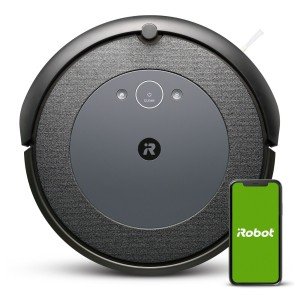The Rise of Robotic Vacuums: A Comprehensive Overview
In today's fast-paced world, innovation is consistently developing to make our lives much easier, and the home cleaning sector has actually seen among the most noteworthy advancements: the robotic vacuum. This intelligent gadget not just saves energy and time but also guarantees a cleaner home environment with minimal manual effort. This post explores the interesting advancement of robotic vacuums, how they work, their benefits and drawbacks, market patterns, and future directions.
The Evolution of Robotic Vacuums
Robotic vacuums have actually made great strides since their beginning in the late 1990s. The first commercially offered robotic vacuum was introduced in 1996, followed by numerous models, each developed with intensifying elegance and functions. Here is a quick timeline of robotic vacuum advancement:
| Year | Event |
|---|---|
| 1996 | Release of the first robotic vacuum (Electrolux's Trilobite) |
| 2002 | iRobot Roomba is released, making robotics mainstream |
| 2010 | Intro of advanced mapping and navigation functions |
| 2017 | Combination of AI and smart home compatibility |
| 2022 | Introduce of extremely advanced designs featuring self-emptying dustbins |
How Robotic Vacuums Work
Robotic vacuums use a mix of sensors, algorithms, and expert system to navigate areas successfully. Here's how they run:
- Navigation: Most robotic vacuums utilize a series of sensing units to discover obstacles and navigate around furniture. Some high-end designs integrate LIDAR (Light Detection and Ranging) technology to create detailed maps of the environment.
- Cleaning Mechanisms: They are geared up with turning brushes and suction mechanisms to collect debris from various surfaces. Depending upon the model, they can shift in between carpets and difficult floorings perfectly.
- Smart Features: Many modern-day robotic vacuums are Wi-Fi enabled, allowing users to control them from another location by means of a mobile phone app. Features frequently consist of scheduling, drawing up cleaning paths, and integration with other smart home devices.
- Self-Maintenance: High-end units may feature self-emptying capabilities, where the robot can dock itself to a base that collects dust and debris without human intervention.
Benefits of Robotic Vacuums
Robotic vacuums have amassed tremendous appeal, and for good reasons. Here are a few of the most significant benefits:
- Time-Saving: Automating the cleaning process enables users to take part in other significant activities.
- Effective Cleaning: Regular cleaning can be quickly accomplished by scheduling the robot to clean daily or weekly, keeping dirt and irritants at workable levels.
- Compact Design: Their little size allows them to fit under furnishings and in hard-to-reach locations.
In spite of their benefits, robotic vacuums likewise include limitations:
- Limited suction power: While they work for preserving clean floors, they may not match the deep cleaning of traditional vacuums.
- Battery life: Most designs require to return to their dock after a certain duration of use.
- Initial costs: High-quality robotic vacuums can be pricey, though rates have actually been reducing with improvements in innovation.
Present Market Trends
The marketplace for robotic vacuums is broadening quickly. According to a recent marketing research report, the worldwide robotic vacuum market is expected to reach ₤ 7.2 billion by 2027, growing at a CAGR of 23.5%, driven by numerous factors:
Increased Adoption of Smart Home Devices
The rise of smart home innovation has encouraged customers to integrate robotic vacuums into their homes. Lots of robotic vacuums work effortlessly with home assistants like Amazon Alexa and Google Assistant, simplifying their operation.
Advances in Robotics and AI
As the technology behind robotic vacuums develops, models are being geared up with better navigation systems, AI algorithms for discovering personal cleaning habits, and boosted features for particular floor types.
Focus on Health and Hygiene
The increased awareness of cleanliness and hygiene, especially due to recent global events, has actually driven customers to purchase devices that routinely get rid of dust, allergens, and family pet hair from their homes.
Future Directions
As technology advances, robotic vacuums are anticipated to progress even more, including functions that increase their efficiency in families. Prepared for developments include:
- Improved AI Learning: With improvements in artificial intelligence, future designs will be much better at understanding their environment and adjusting to the requirements of their owners.
- Multi-Purpose Design: Potential future designs may consist of features for mopping, disinfecting, and air purification in addition to vacuuming.
- Sustainability: As eco-consciousness increases, producers are likely to concentrate on energy effectiveness, recyclable products, and sustainable production practices.
FAQs About Robotic Vacuums
1. Can robotic vacuums vacuum on carpet?Yes, many robotic vacuums can transition in between various floor types, consisting of carpets and hard floors. 2. How often ought to I run my robotic vacuum?It depends
on your family's cleaning requirements, but numerous users
schedule their robotic vacuums to run day-to-day or every couple of days. 3. Are robotic vacuums worth the investment?For many customers, the time conserved and convenience provided by robotic vacuums makes them beneficial,
specifically for busy families. 4. Can I manage my robotic vacuum remotely? automatic vacuum www.robotvacuummops.com can be controlled via a smartphone app, allowing for scheduling and tracking from anywhere. 5. Do I still need a traditional vacuum cleaner?While robotic vacuums efficiently handle day-to-day cleaning, a traditional vacuum may still be essential for deep cleans up or toughermesses. The advancement of robotic vacuums reflects a substantial leap in automating housework, integrating ingenious technology with easy to use operation. As the trend towards smart homes continues and consumer expectations evolve, robotic vacuums will likely keep enhancing, supplying ever-greater convenience and performance in preserving clean home. As property owners consider the potential advantages and constraints of these devices, it is clear that robotic vacuums have strengthened their reputation as important tools in modern-day home management.

